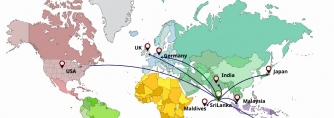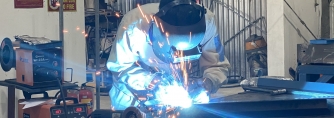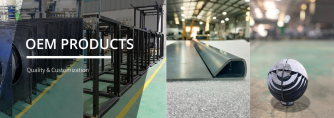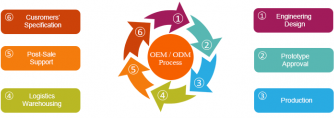
In the field of sheet metal fabrication, the production of high-quality, precise, and distortion-free products is a constant challenge for fabricators. At Smart Vietnam, we are well aware of the difficulties faced by professionals in this industry. As a leading provider of sheet metal solutions, we are dedicated to sharing our expertise and knowledge to help you overcome these challenges.
In this guide, we explored the causes and consequences of warping and distortion, emphasizing the importance of understanding these factors. Stay tuned for part two, where we will delve deeper into best practices for preventing warping and distortion, including pre-fabrication considerations, effective heat management techniques, minimizing mechanical stresses, and controlled cooling and post-fabrication processes. Whether you are a seasoned professional or a newcomer to the industry, this guide will provide you with valuable insights and expert tips to ensure the production of high-quality, precise, and distortion-free sheet metal products.
1. Understanding Warping and Distortion in Sheet Metal Fabrication
Sheet metal fabrication involves the process of transforming flat sheets of metal into various products and components used in industries such as automotive, aerospace, construction, and more. However, warping and distortion can pose significant challenges, compromising the integrity and functionality of the fabricated products. To effectively prevent warping and distortion, it is crucial to understand their causes and consequences.
1.1 Causes of Warping and Distortion
Material Properties
Different metals exhibit varying degrees of susceptibility to warping and distortion. Factors such as thermal conductivity, coefficient of thermal expansion, and yield strength can influence the material's response to heat and mechanical forces during the fabrication process.
Heat
Heat plays a significant role in sheet metal fabrication processes like welding, cutting, and forming. Rapid or uneven heating and cooling can introduce thermal stresses, leading to warping and distortion. Inadequate heat management can also result in localized overheating, causing material weakness.
Mechanical Forces
Forces exerted during bending, stretching, and forming operations can induce stress concentrations, contributing to warping and distortion. Inefficient tooling, improper clamping, and inadequate support systems can exacerbate these mechanical stresses.
1.2 Consequences of Warping and Distortion
Dimensional Inaccuracy
Warping and distortion can lead to deviations from the desired dimensions and tolerances specified in the design. This can result in ill-fitting components, assembly issues, and compromised functionality of the final product.
Structural Weakness
Distorted sheet metal parts may suffer from reduced structural integrity, affecting their load-bearing capacity and overall performance. This can jeopardize the safety and reliability of the fabricated products.
Aesthetic Defects
Warping and distortion can also impact the visual appearance of sheet metal products, making them appear uneven, misshapen, or unprofessional. This can have a negative impact on the perceived quality and marketability of the final product.
2. Best Practices for Preventing Warping and Distortion
Now that we have a clear understanding of the causes and consequences of warping and distortion, let's explore some best practices that sheet metal fabricators can employ to mitigate these issues effectively. By implementing these preventive measures, you can ensure the production of high-quality, precise, and distortion-free sheet metal products.
2.1 Pre-fabrication Considerations
Material Selection
Choosing the appropriate sheet metal material is crucial in minimizing warping and distortion. Consider factors such as thermal conductivity, coefficient of thermal expansion, yield strength, and ductility when selecting the material for your specific application.
Thickness Optimization
The thickness of the sheet metal can influence its susceptibility to warping and distortion. Thicker sheets generally exhibit greater resistance to deformation, but they may require higher forces during forming operations. Finding the optimal balance between thickness and formability is key.
Design Optimization
Collaborate closely with designers and engineers to optimize the product design for manufacturability. Consider factors such as bend radii, fillet sizes, and the placement of critical features to minimize the introduction of unnecessary stress concentrations.
2.2 Effective Heat Management Techniques
Welding
Proper welding techniques and heat management are essential to prevent distortion in welded sheet metal assemblies. Use appropriate welding processes, such as TIG (Tungsten Inert Gas) or MIG (Metal Inert Gas), and control the heat input and cooling rates to minimize thermal stresses.
Cutting
During cutting processes like laser cutting or punching, ensure that the heat-affected zone is minimized by using the appropriate cutting parameters. Properly calibrate and maintain cutting equipment to achieve precise and controlled cuts without excessive heat generation.
Forming
Employ techniques such as gradual bending, where the material is incrementally bent rather than subjected to a single sharp bend. This allows the metal to distribute stresses more evenly and reduces the likelihood of warping and distortion.
2.3 Minimizing Mechanical Stresses
Tooling
Utilize high-quality tooling that is specifically designed for the sheet metal fabrication process. Proper tool selection, including punch and die sizes, can help distribute forces evenly and minimize stress concentrations. Additionally, consider using specialized tool coatings or materials that reduce friction and improve material flow.
Clamping and Fixturing
Ensure that sheet metal components are securely clamped or fixtured during fabrication operations. This helps to stabilize the material and prevent movement or distortion caused by forces applied during bending, stretching, or forming. Use appropriate clamps, jigs, or fixtures to ensure uniform pressure distribution.
Support Systems
Implement effective support systems to minimize deformation during fabrication processes. This can include using support blocks, backgauges, or mandrels to provide additional support to the sheet metal during bending or forming operations. Proper support helps distribute forces and reduces the likelihood of warping or distortion.
2.4 Controlled Cooling and Post-Fabrication Processes
Heat Treatment
Consider incorporating heat treatment processes, such as stress relieving or annealing, after certain fabrication operations. Heat treatment can help alleviate residual stresses and reduce the potential for warping or distortion. Consult with material and heat treatment experts to determine the appropriate parameters for your specific application.
Controlled Cooling
Implement controlled cooling techniques to minimize thermal gradients and the associated stresses. This can involve using cooling fixtures, water quenching, or controlled ambient temperature environments to achieve gradual and uniform cooling of the fabricated parts.
Post-Fabrication Straightening
In cases where warping or distortion has occurred, post-fabrication straightening techniques can be employed. These techniques involve applying controlled forces or thermal treatments to return the sheet metal to its intended shape. However, it is essential to exercise caution during straightening to avoid inducing additional stresses or compromising the material's properties.
Throughout this guide, we have explored the various factors that contribute to warping and distortion, emphasizing the importance of pre-fabrication considerations, heat management techniques, minimizing mechanical stresses, and controlled cooling and post-fabrication processes. By implementing the best practices outlined in this guide, fabricators can significantly reduce the occurrence of warping and distortion, resulting in improved product quality, structural integrity, and customer satisfaction. With Smart Vietnam's expertise and commitment to quality, you can rely on us as your trusted partner in achieving high-quality, precise, and distortion-free sheet metal products.
- Smart Vietnam Launches New Liquid Painting Shop
- Smart Vietnam’s Stainless Steel Printer Enclosure: Lock, Load, and Print
- Smart Vietnam’s ISO-Certified Quality: Built Right, First Time, Every Time
- Smart Vietnam’s Trolley Rack for Rigging: Grab, Load, and Roll
- Smart Vietnam’s Rigging Station Combo: Hang It, Store It, Move It – Built for Real Worksites
- Bead Blast Surface Finish Chart: Smart Vietnam’s Guide to Consistent, High-Quality Metal Finishing
- Smart Vietnam’s Contract Sheet Metal Manufacturing: Built for Business, Backed by Craft
- Smart Vietnam’s Roll Cages for Pharmaceutical Businesses: Built Tough for Clean, Secure Transport
- Smart Vietnam’s 2-in-1 Steel Rolling Tool Chest: 8-Drawer Cabinet for Garage & Workshop Use



















_cr_334x118.png)

















-min_cr_334x118.jpg)


















